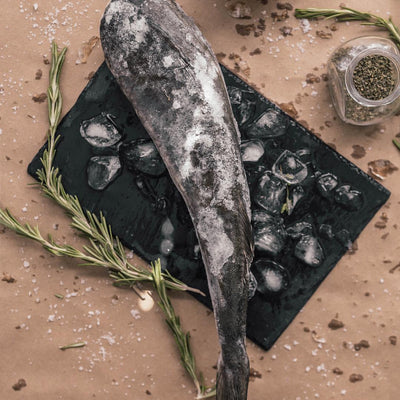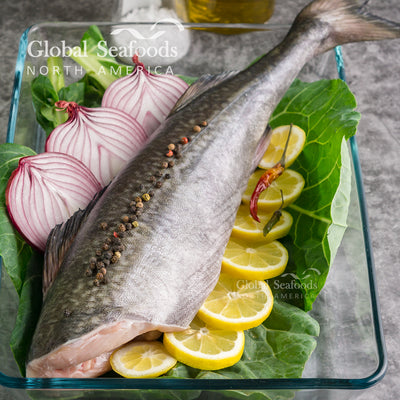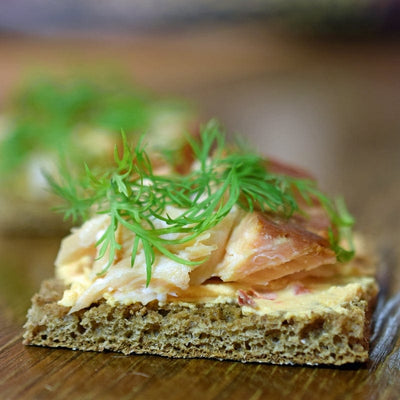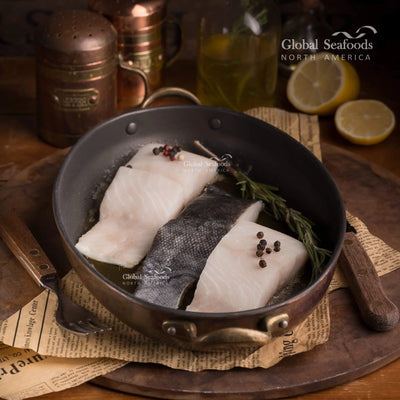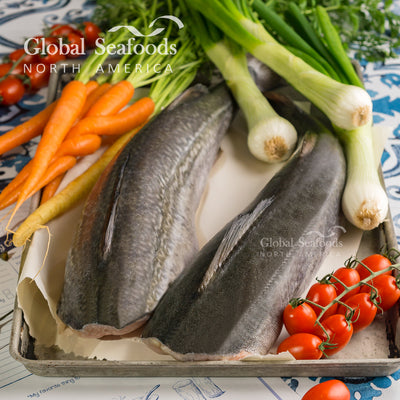🔥 Alaskan Sablefish (Black Cod) – The Buttery Delicacy of the North Pacific

Alaskan Sablefish (Black Cod) – The Buttery Delicacy of the North Pacific
Alaskan Sablefish, commonly known as Black Cod, is a luxurious and nutrient-rich seafood prized for its velvety texture and rich, buttery flavor. Harvested from the cold, pristine waters of Alaska, this deep-sea delicacy is a favorite among chefs and seafood lovers worldwide.
In this comprehensive guide, we’ll explore everything you need to know about Alaskan Sablefish, including its habitat, taste, health benefits, sustainability, and the best ways to cook it.
📌 Looking for premium sablefish fillets?
🔗 Buy Sablefish Fillets (Black Cod)
1. What is Sablefish (Black Cod)?
Sablefish (Anoplopoma fimbria), often marketed as Black Cod, is a deep-sea fish found in the North Pacific Ocean, particularly in Alaskan waters. Despite its name, black cod is not a true cod—it belongs to a different fish family but shares similar characteristics with high-end seafood like Chilean sea bass and wild salmon.
🔹 Why is Sablefish Special?
✔ Rich, Buttery Flavor: High natural oil content gives it a melt-in-your-mouth texture.
✔ Extremely Versatile: Ideal for grilling, baking, pan-searing, or smoking.
✔ Packed with Nutrients: High in omega-3 fatty acids, protein, and essential vitamins.
📌 Want premium black cod?
🔗 Buy Black Cod (Sablefish)
2. Taste & Culinary Appeal – Why Chefs Love Sablefish
Sablefish is highly prized in fine dining due to its succulent, velvety texture and luxurious, buttery flavor.
🔹 Flavor Profile
- Mild & Sweet: Not overly fishy, making it perfect for first-time seafood eaters.
- Rich & Buttery: Comparable to Chilean sea bass or fatty salmon.
- Moist & Tender: Due to its high oil content, it stays juicy when cooked.
🔹 Best Cooking Methods
🔥 Grilled: Cooks beautifully on a charcoal or gas grill.
🔥 Baked: Ideal for miso-glazed or herb-roasted preparations.
🔥 Pan-Seared: Achieves a crispy skin while keeping the inside moist.
🔥 Smoked: The high-fat content makes it perfect for smoking.
📌 Try smoked sablefish for a unique taste experience:
🔗 Buy Smoked Black Cod
3. The Habitat of Alaskan Sablefish
🔹 Where Does Sablefish Live?
📍 Pacific Northwest & Alaskan Waters – Sablefish thrive in cold, deep-sea environments between 300 to 2,700 meters below the surface.
✔ Cold, Pristine Waters: Enhances the fish’s rich flavor and fatty texture.
✔ Wild & Sustainable Fisheries: Alaska is known for its eco-friendly fishing regulations.
📌 Shop premium wild-caught sablefish:
🔗 Buy Sablefish Steaks
4. Health Benefits – Why Sablefish is a Superfood
Sablefish is not only delicious but also one of the healthiest seafood options available.
🔹 Key Nutritional Benefits
✅ Omega-3 Powerhouse – Supports heart health, brain function, and reduces inflammation.
✅ High-Quality Protein – Essential for muscle growth and tissue repair.
✅ Rich in Vitamins & Minerals – Provides vitamin D, selenium, and B vitamins.
✅ Low in Mercury – Safer to eat compared to larger predatory fish.
📌 Want the healthiest black cod? Try dry-aged sablefish:
🔗 Buy Dry-Aged Sablefish
5. Sustainable Fishing Practices in Alaska
Alaska is a global leader in sustainable fisheries, ensuring that sablefish populations remain healthy.
✔ Strict Catch Limits – Prevents overfishing and maintains a balanced ecosystem.
✔ Selective Fishing Methods – Uses longlines and pot fishing to reduce bycatch.
✔ Regulated by NOAA & MSC Certified – Ensures eco-friendly practices.
📌 Support sustainable seafood!
🔗 Explore More Sablefish Options
6. Cooking with Sablefish – A Delicious Recipe
🔹 Recipe: Sablefish with Ginger Soy Glaze
Ingredients:
- 4 sablefish fillets (about 6 oz each)
- Salt and freshly ground black pepper, to taste
- 2 tbsp olive oil
- 2 tbsp unsalted butter
- 1 tbsp soy sauce
- 1 tbsp maple syrup or honey
- 1 tsp finely grated ginger
- 1 clove garlic, minced
Instructions:
1️⃣ Prep the Sablefish: Pat the fillets dry and season with salt and pepper.
2️⃣ Cooking Sablefish: Heat olive oil in a skillet and cook the fillets skin-side down first.
3️⃣ The Glaze: Combine soy sauce, maple syrup, ginger, and garlic. Simmer and glaze the fish.
4️⃣ Serve: Pair with roasted root vegetables or a fresh salad for a balanced meal.
📌 Looking for premium sablefish for your next meal?
🔗 Buy Black Cod
7. FAQs About Sablefish
Q1: What is the difference between sablefish and black cod?
A1: There is no difference! Sablefish and black cod are the same species, but black cod is a common market name.
Q2: Does sablefish have high mercury levels?
A2: No! Sablefish has relatively low mercury levels, making it a safer seafood option.
Q3: Is sablefish a sustainable seafood choice?
A3: Yes! Alaska’s strict sustainability regulations ensure that sablefish populations remain healthy.
Q4: How should I store sablefish?
A4: Keep it refrigerated for up to 2 days or frozen for up to 6 months in vacuum-sealed packaging.
📌 Shop premium sablefish fillets:
🔗 Buy Sablefish Fillets (Black Cod)
Final Thoughts – Why You Should Try Alaskan Sablefish
Alaskan Sablefish (Black Cod) is a true seafood delicacy, offering a luxurious taste, high nutritional value, and versatile cooking options. Whether you grill, bake, pan-sear, or smoke it, sablefish is a must-try for any seafood lover.
📌 Shop premium sablefish today:
🔗 Explore Global Seafoods’ Full Selection
📺 Watch more about sablefish on YouTube:
🔗 Global Seafoods YouTube Channel
Also in News

How to Make Sea Bream Sushi With Dry-Aged Tuna & Crab Roll — Step-by-Step With Chef Joshua
A complete guide to making Sea Bream sushi at home, including filleting, curing, slicing, and building a Dry-Aged Tuna & Crab sushi roll. Chef Joshua shares professional tips for restaurant-quality results.

Boiled Crab for Game Night: Everything You Need for a Perfect Seafood Party
Take your game night to the next level with a Boiled crab party. Learn the best recipes, cooking tips, and hosting hacks for a memorable seafood feast.

Boiled Crab for Date Night: A Romantic Guide to the Perfect Seafood Feast
Make your next date night unforgettable with a romantic Boiled crab experience. This guide covers everything you need to know, from ambiance to the best crab varieties.

